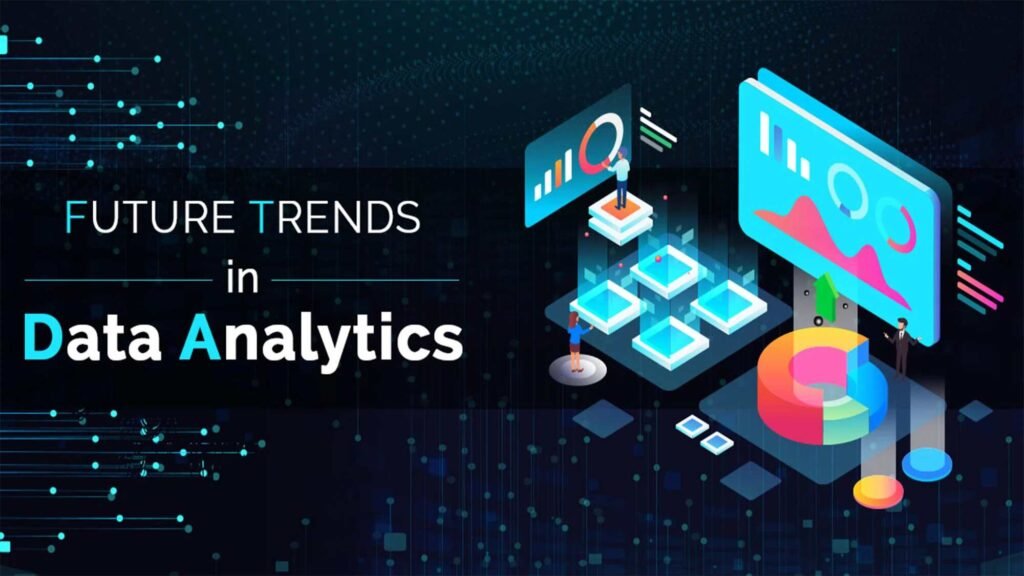AI data analytics is revolutionizing how businesses understand and utilize their data. By leveraging advanced algorithms and machine learning, AI transforms raw data into actionable insights, driving better decision-making and optimizing operations. This article will delve into the essentials of AI data analytics, exploring its benefits, applications, and best practices to help you harness its full potential.
What is AI Data Analytics?
Defining AI Data Analytics
AI data analytics combines artificial intelligence and data analysis techniques to extract meaningful insights from large datasets.
Unlike traditional data analytics, which relies on manual processes and simple algorithms, AI can handle vast amounts of data, identify complex patterns, and make accurate predictions. This makes it a powerful tool for businesses looking to gain a competitive edge.
How AI Transforms Data Analysis
AI enhances data analysis by automating many of the tasks that were previously done manually. It can quickly process and analyze large datasets, identify trends, and generate predictions.
This not only saves time but also improves the accuracy and reliability of the insights generated. AI algorithms can continuously learn and adapt, becoming more accurate over time.
Benefits of AI Data Analytics
Improved Decision-Making
One of the primary benefits of AI data analytics is improved decision-making. By providing accurate and timely insights, AI helps businesses make informed decisions.
Whether it’s predicting market trends, optimizing supply chains, or personalizing customer experiences, AI-driven insights enable businesses to act with confidence.
Enhanced Efficiency
AI automates many of the repetitive tasks involved in data analysis, freeing up time for employees to focus on more strategic activities.
This leads to greater efficiency and productivity. AI can also identify inefficiencies in business processes, providing recommendations for improvement.
Better Customer Insights
AI data analytics provides deep insights into customer behavior and preferences. By analyzing data from various sources, such as social media, purchase history, and customer feedback, AI can identify patterns and trends.
This helps businesses understand what their customers want and how to better serve them, leading to higher customer satisfaction and loyalty.
Applications of AI Data Analytics
Predictive Analytics
Predictive analytics uses AI to analyze historical data and make predictions about future trends.
This is useful in many areas, from forecasting sales and demand to predicting customer behavior. By using predictive analytics, businesses can make proactive decisions and optimize their operations.
Personalization
AI can analyze customer data to create personalized experiences.
This includes personalized marketing messages, product recommendations, and tailored customer service. Personalization helps businesses engage customers in a more meaningful way, leading to higher engagement and conversion rates.
Fraud Detection
AI is also used in fraud detection. By analyzing transaction data, AI can identify unusual patterns that may indicate fraudulent activity.
This is particularly valuable in industries like finance and insurance, where fraud prevention is crucial.
Operational Efficiency
AI can help businesses improve their operational efficiency by automating routine tasks and optimizing processes.
For example, AI can be used to manage inventory, schedule maintenance, and streamline supply chain operations. By reducing manual work and improving accuracy, AI helps businesses save time and reduce costs.
Implementing AI Data Analytics
Starting with Clear Objectives
Before implementing AI data analytics, it’s crucial to define clear objectives. What do you hope to achieve with AI?
Whether it’s improving customer insights, increasing operational efficiency, or detecting fraud, having specific goals will guide your AI strategy and ensure you focus on the right areas.
Investing in Quality Data
High-quality data is the foundation of effective AI data analytics. Ensure your data is accurate, complete, and up-to-date.
This involves regular data cleaning, validation, and enrichment processes. Investing in good data management practices will lead to more reliable AI insights and better business outcomes.
Choosing the Right Tools
There are many AI tools available, each with its own strengths and weaknesses. Carefully evaluate your options to find the tools that best meet your needs.
Consider factors like ease of use, scalability, and integration with existing systems. Look for tools that offer robust support and training resources to help you get the most out of your investment.
Building a Skilled Team
Implementing AI requires a team with a diverse set of skills.
This includes data scientists who can build and train AI models, data engineers who can manage the underlying data infrastructure, and business analysts who can interpret the results and ensure they are relevant to the business. Having the right team in place is crucial for successful AI implementation.
Best Practices for AI Data Analytics
Ensuring Data Privacy and Security
AI systems often require access to large amounts of data, some of which may be sensitive. Ensuring data privacy and security is paramount.
Implement strong data protection measures, such as encryption and access controls, and comply with relevant regulations, like the General Data Protection Regulation (GDPR).
Continuous Monitoring and Improvement
AI models are not static; they need to be continuously monitored and updated to remain effective. Track their performance over time and make adjustments as needed.
Stay up-to-date with the latest developments in AI technology to ensure you are using the most advanced and effective tools available.
Addressing Bias in AI Models
AI models can inherit biases present in the training data, leading to unfair or inaccurate outcomes.
To mitigate bias, use diverse and representative datasets, regularly review and test your models, and implement corrective measures as needed. Ensuring transparency in AI processes can also help build trust and accountability.
Fostering a Culture of Innovation
AI can significantly transform business processes, but its successful implementation requires a culture of innovation.
Encourage employees to embrace new technologies and foster an environment where experimentation is welcomed. Providing training and development opportunities can help employees acquire the skills needed to work with AI tools and systems.
Real-World Examples of AI Data Analytics
Retail Industry
A major retail chain implemented AI to enhance its inventory management system. By analyzing sales data and market trends, AI provided accurate demand forecasts, helping the retailer optimize stock levels.
This led to a significant reduction in stockouts and overstock situations, improving customer satisfaction and reducing costs.
Financial Services
A financial services firm used AI to improve its risk assessment models. By analyzing financial data and market conditions, AI provided insights into potential risks, allowing the firm to develop more effective risk management strategies.
This improved the firm’s financial stability and reduced exposure to financial losses.
Healthcare Sector
A healthcare provider used AI to analyze patient data and improve treatment outcomes. By leveraging predictive analytics, the provider identified high-risk patients and intervened early, resulting in better patient outcomes and reduced healthcare costs.
AI also streamlined administrative processes, freeing up staff to focus on patient care.
Overcoming Challenges in AI Data Analytics
Dealing with Data Quality Issues
One of the biggest challenges in AI data analytics is ensuring data quality. Poor-quality data can lead to inaccurate insights and flawed decision-making.
To overcome this, businesses should invest in robust data management practices, including data cleaning, validation, and enrichment. Regularly auditing data sources and implementing data governance frameworks can help maintain high data quality.
Managing Complexity
AI models can be complex and difficult to manage. Developing a clear understanding of how AI models work and implementing robust management practices can help.
This includes regular monitoring, updating models, and ensuring transparency in how AI decisions are made. Simplifying models where possible and using user-friendly tools can also make AI more accessible to non-technical stakeholders.
Ensuring Ethical Use of AI
Ethics is a critical consideration when using AI in data analytics. Businesses must ensure their AI systems are fair, transparent, and unbiased.
This involves regularly reviewing and testing AI models to identify and correct any biases. Establishing ethical guidelines and promoting a culture of responsibility can help ensure AI is used in a way that aligns with company values and societal norms.
Building Trust in AI Systems
Building trust in AI systems is essential for their successful implementation. This can be achieved through transparency, explainability, and accountability.
Providing clear explanations for AI-driven insights helps stakeholders understand and trust the technology. Regular audits and assessments of AI systems ensure they remain reliable and effective.
Future Trends in AI Data Analytics

Integration with IoT
The integration of AI with the Internet of Things (IoT) is set to drive further advancements in data analytics.
IoT devices generate vast amounts of data in real-time. By integrating AI, businesses can analyze this data more effectively, enabling real-time decision-making and more efficient operations. This integration is particularly valuable in industries like manufacturing, healthcare, and transportation.
Advances in Natural Language Processing (NLP)
Natural Language Processing (NLP) is making it easier for businesses to analyze and interact with textual data.
Advances in NLP are opening up new possibilities for AI in data analytics, from sentiment analysis in customer feedback to automated report generation. Improved NLP capabilities enhance the accuracy and usability of AI-driven insights.
Explainable AI
As AI becomes more integrated into business processes, the need for explainable AI grows.
Explainable AI focuses on making AI models more transparent and understandable, helping businesses trust AI decisions and ensure they align with their values and objectives. By providing clear explanations for how AI models reach their conclusions, businesses can improve accountability and trust in AI systems.
AI-Powered Analytics Platforms
AI-powered analytics platforms are becoming more accessible, enabling businesses of all sizes to leverage AI for their analytics needs. These platforms offer a range of tools and features, from data visualization to predictive analytics, making it easier for businesses to gain insights and make data-driven decisions.
The democratization of AI technology is helping level the playing field, allowing even small businesses to benefit from advanced analytics.
Preparing for the Future of AI Data Analytics

Investing in Research and Development
Investing in research and development is crucial for staying at the forefront of AI technology. Businesses should allocate resources to explore new AI applications, develop innovative solutions, and enhance existing systems.
R&D investments drive technological advancements and ensure that businesses remain competitive in the AI-driven future.
Developing Strategic AI Roadmaps
Developing strategic AI roadmaps helps businesses plan for the future. These roadmaps should outline short-term and long-term AI goals, the steps needed to achieve them, and the resources required.
A clear plan ensures that AI initiatives are aligned with business objectives and that efforts are focused on the most impactful areas.
Fostering Talent Development
Fostering talent development is crucial for sustaining AI initiatives.
Invest in training programs, provide opportunities for skill development, and encourage a culture of continuous learning. Developing a strong talent pipeline ensures that businesses have the expertise needed to leverage AI effectively.
Embracing a Flexible Approach
The AI landscape is constantly evolving, and businesses must stay agile and adaptable to keep up. This involves regularly reviewing and updating AI strategies, being willing to pivot when needed, and embracing a flexible approach to innovation.
By staying agile, businesses can quickly respond to changes and take advantage of new opportunities.
Enhancing Business Intelligence with AI
Real-Time Data Analysis
AI enables businesses to analyze data in real-time, providing immediate insights that can drive swift decision-making.
Real-time data analysis is particularly useful in fast-paced industries such as finance, retail, and logistics, where timely decisions can significantly impact performance and customer satisfaction.
AI-Powered Dashboards
AI-powered dashboards allow businesses to visualize complex data sets in an intuitive and accessible way.
These dashboards can highlight key performance indicators, trends, and anomalies, making it easier for decision-makers to understand and act on the data. AI can also automate the generation of reports, saving time and reducing the risk of human error.
Enhancing Competitive Analysis
AI can enhance competitive analysis by monitoring market trends, competitor activities, and customer sentiment. By analyzing data from multiple sources, AI can provide a comprehensive view of the competitive landscape.
This helps businesses identify opportunities and threats, allowing them to stay ahead of the competition.
Leveraging AI for Improved Sales and Marketing
Sales Forecasting
AI can significantly enhance sales forecasting by analyzing historical sales data, market trends, and external factors. Accurate sales forecasts help businesses plan their inventory, allocate resources, and set realistic targets.
This leads to better financial planning and improved profitability. By leveraging AI for sales forecasting, companies can anticipate market demands and adjust their strategies accordingly.
Customer Segmentation
AI helps businesses segment their customer base more effectively. By identifying distinct groups within their audience, businesses can tailor their marketing efforts to meet the specific needs and preferences of each segment.
This targeted approach leads to more effective marketing campaigns and higher customer satisfaction. AI-driven segmentation can uncover hidden patterns in customer behavior, enabling more precise targeting.
Personalizing Customer Interactions
AI enables businesses to create highly personalized customer interactions. By analyzing customer data, AI can determine the best times to send messages, the most effective channels to use, and the content that will resonate most with individual customers.
This level of personalization leads to higher engagement and conversion rates. Personalization extends beyond marketing to customer service, where AI can tailor responses based on customer history and preferences.
Streamlining Operations with AI
Automating Routine Tasks
AI can automate many routine tasks, freeing up time for employees to focus on more strategic activities. For example, AI can be used to manage inventory, schedule maintenance, and streamline supply chain operations.
Automation reduces the risk of human error, increases efficiency, and allows businesses to operate more smoothly. In customer service, AI chatbots can handle common inquiries, leaving complex issues to human agents.
Optimizing Resource Allocation
AI can help businesses optimize resource allocation by analyzing data on employee performance, project requirements, and resource availability. This ensures that resources are used effectively and that projects are completed on time and within budget.
AI-driven resource allocation improves operational efficiency and reduces costs. In manufacturing, AI can optimize production schedules to minimize downtime and maximize output.
Enhancing Security Measures
AI enhances security measures by detecting and responding to threats in real-time. AI systems can analyze network traffic, identify unusual patterns, and flag potential security breaches.
This proactive approach helps businesses protect their data and infrastructure, reducing the risk of cyberattacks. AI can also monitor physical security through video analytics, identifying suspicious activities and alerting security personnel.
AI in Human Resources and Talent Management
Streamlining Recruitment Processes
AI can streamline recruitment processes by automating the screening and selection process. AI-driven tools can analyze resumes, match candidates to job openings, and even conduct initial interviews.
This reduces the time and effort required to find the right candidates, ensuring a more efficient hiring process. AI can also identify the best job boards and channels to post vacancies based on historical success rates.
Enhancing Employee Development
AI supports employee development by identifying skills gaps and recommending personalized training programs. By analyzing employee performance data, AI can suggest courses, workshops, or on-the-job training that will help employees develop the skills they need to succeed.
This leads to a more skilled and capable workforce. AI can also predict future skill requirements, helping businesses prepare their workforce for upcoming challenges.
Improving Performance Management
AI can enhance performance management by providing real-time feedback and insights into employee performance. AI-driven systems can track key performance indicators, identify areas for improvement, and suggest actionable steps to help employees achieve their goals.
This leads to a more engaged and productive workforce. Regular performance insights help managers make informed decisions about promotions, raises, and development opportunities.
The Role of AI in Sustainability and Corporate Responsibility

Environmental Impact Analysis
AI helps businesses analyze their environmental impact by monitoring energy usage, waste production, and carbon emissions. By identifying areas where improvements can be made, AI enables businesses to develop more sustainable practices.
This not only benefits the environment but also enhances the company’s reputation and reduces costs. AI can optimize energy consumption in buildings and manufacturing processes, leading to significant savings.
Supply Chain Transparency
AI provides greater transparency in the supply chain by tracking the origin and journey of products. This helps businesses ensure that their suppliers adhere to ethical and environmental standards.
Improved supply chain transparency reduces the risk of reputational damage and enhances consumer trust. AI can verify certifications and compliance with regulations, ensuring that products are sourced responsibly.
Social Responsibility Initiatives
AI supports social responsibility initiatives by analyzing data on social impact and identifying opportunities for improvement. For example, AI can help businesses track their progress on diversity and inclusion goals, monitor community engagement activities, and measure the effectiveness of charitable programs.
This enables businesses to make a positive impact on society and build a stronger brand. AI can also predict the outcomes of different initiatives, helping businesses choose the most effective strategies.
Preparing for AI-Driven Innovation
Embracing a Forward-Thinking Mindset
To fully leverage AI for data analytics, businesses must embrace a forward-thinking mindset. This involves staying open to new ideas, experimenting with innovative technologies, and continuously seeking ways to improve.
By fostering a culture of innovation, businesses can stay ahead of the curve and capitalize on emerging opportunities. Encouraging employees to think creatively about AI applications can lead to groundbreaking solutions.
Building Strategic Partnerships
Building strategic partnerships with AI vendors, research institutions, and industry experts can provide businesses with valuable insights and support.
These partnerships can help businesses stay informed about the latest AI developments, access cutting-edge technology, and receive expert guidance on AI implementation. Collaborating with external partners can also lead to joint innovations and shared success.
Investing in Talent and Technology
Investing in talent and technology is crucial for successful AI integration. Businesses should prioritize hiring skilled data scientists, engineers, and analysts, as well as providing ongoing training and development opportunities.
Additionally, investing in advanced AI tools and infrastructure ensures that businesses have the resources they need to succeed. Continuous investment in talent development keeps the workforce ready for future AI advancements.
Staying Agile and Adaptable
The AI landscape is constantly evolving, and businesses must stay agile and adaptable to keep up. This involves regularly reviewing and updating AI strategies, being willing to pivot when needed, and embracing a flexible approach to innovation.
By staying agile, businesses can quickly respond to changes and take advantage of new opportunities. Maintaining an agile approach helps businesses navigate the uncertainties of AI implementation effectively.
Addressing Ethical Considerations in AI Data Analytics
Ensuring Fairness and Accountability
As AI becomes more integrated into business operations, ensuring fairness and accountability in AI-driven decisions is crucial. Businesses should implement practices to regularly audit AI models for biases and take corrective actions when necessary.
Transparent reporting on AI processes and outcomes helps build trust with stakeholders and ensures that AI is used responsibly.
Promoting Diversity in AI Development
Promoting diversity in AI development teams can help reduce biases and create more inclusive AI systems. Diverse teams bring different perspectives and experiences, leading to more robust and fair AI solutions.
Encouraging diverse hiring practices and fostering an inclusive work environment are key steps in achieving this goal.
Establishing Ethical Guidelines
Establishing ethical guidelines for AI use is essential to ensure responsible practices. These guidelines should cover data privacy, bias mitigation, transparency, and accountability.
Regularly reviewing and updating these guidelines helps keep them relevant and effective in addressing emerging ethical issues.
Engaging with Stakeholders
Engaging with stakeholders, including employees, customers, and the broader community, is important for understanding the impacts of AI.
Open dialogues about AI use, potential risks, and benefits can help build trust and ensure that AI initiatives align with the values and expectations of all stakeholders.
Future-Proofing Your AI Strategy
Continuous Innovation
Continuous innovation is key to staying competitive in the AI-driven landscape. Encourage a culture of experimentation, where new ideas and approaches are tested and refined.
Investing in research and development helps businesses stay at the forefront of AI advancements and identify new opportunities for growth.
Scalable AI Solutions
Investing in scalable AI solutions ensures that your AI systems can grow with your business. This involves choosing flexible tools and platforms that can handle increasing data volumes and more complex analyses.
Scalability is crucial for maintaining the performance and effectiveness of AI systems as your business expands.
Long-Term AI Vision
Developing a long-term vision for AI integration helps guide your strategy and investments. This vision should align with your overall business goals and outline the desired future state of AI use within your organization.
A clear long-term vision ensures that AI initiatives are focused and strategic, driving sustained business value.
Wrapping it up
AI data analytics is revolutionizing business operations by providing deeper insights, automating tasks, and enhancing decision-making. To harness its full potential, businesses must prioritize data quality, ethical practices, and continuous innovation.
Fostering a culture of inclusivity, staying informed about AI advancements, and developing scalable solutions, companies can leverage AI to gain a competitive edge. Embracing AI data analytics will lead to better decisions, optimized operations, and improved customer experiences, positioning businesses for long-term success in a data-driven future.
READ NEXT:
- Effective Marketing Strategies for Lash Technicians
- How to Market Your Pressure Washing Business
- Marketing Strategies for Financial Services
- How to Engage Your Community Through Marketing
- Effective Marketing Strategies for Medical Practices






















Comments are closed.